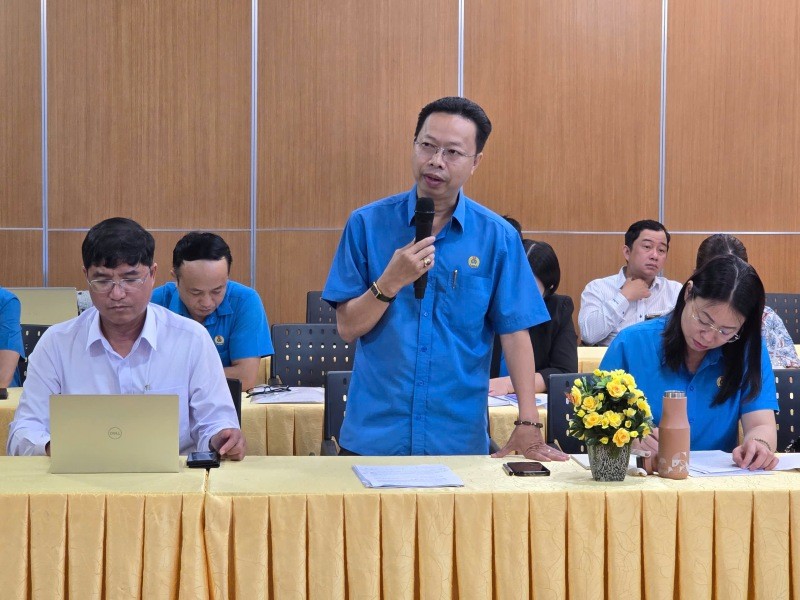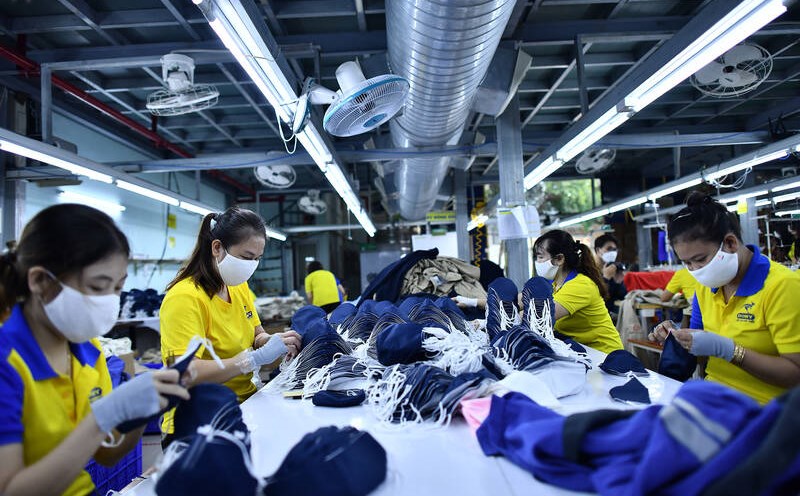Nearly 50 union officials in the southern provinces and cities attended the conference "Calling opinions on the salary system in textile and garment enterprises and recommending the content of dialogue and collective bargaining on wages in the textile and garment industry in Vietnam in 2025" organized by the Vietnam General Confederation of Labor in Ho Chi Minh City on February 21.
Mr. Nguyen Vinh Quang - Deputy Head of the Department of Legal Policy and Labor Relations of the Vietnam General Confederation of Labor - said that textile and garment is the fifth largest industry in the value-added structure of Vietnamese industries.
As of 2024, Vietnam has about 7,000 textile and garment enterprises with about 3 million employees (of which about 74% are female and 90% are in the garment industry), Vietnam's textile and garment products have been exported to more than 180 countries and territories around the world.
Currently, 735 textile and garment enterprises have established grassroots trade unions with a total of more than 491,000 employees, accounting for about 16.4% of the total number of employees in the industry (direct production workers account for 82.44%), female workers account for 83.41%.
According to Mr. Quang, the Resolution of the 13th Congress of the Vietnam General Confederation of Labor has set out 3 breakthroughs, including "Promoting dialogue and collective bargaining, focusing on wages, bonuses, working hours, rest hours, and occupational safety and hygiene".
Therefore, assessing the current status of wages and incomes that enterprises pay to employees will help enhance the role of trade unions at all levels in participating in developing, amending, implementing and supervising the implementation of wages and income policies of enterprises.

Mr. Nguyen Thanh Do - Head of the Policy and Law Department of the Ho Chi Minh City Labor Federation - said that the report needs to pay attention to assessing the textile and garment workforce in the context of a decreasing replacement fertility rate. The State needs to pay attention to the industry and auxiliary resources; consider the financial capacity of enterprises when they are newly established because currently many small enterprises violate the law, owe wages, social insurance, and health insurance to employees, causing disputes in labor relations.
Mr. Nguyen Trung Ngan - Head of the Policy - Law and Labor Relations Department of the Ba Ria - Vung Tau Provincial Federation of Labor - said that the report needs to recommend that businesses strictly implement legal regulations on wages, clearly stating wages for trained workers, wages for heavy, toxic, and dangerous work for employees working in textile and garment enterprises.
"Currently, many enterprises only pay garment workers according to the regional minimum wage but have not paid wages to trained workers and have not paid wages for heavy, toxic, and dangerous industries in enterprises," said Mr. Ngan.
Many opinions suggested that the report should pay attention to the textile and garment labor force, because the current trend is that many localities limit attracting investment in the textile and garment industry to reserve resources for other industries and occupations with higher value, less affecting social security.










